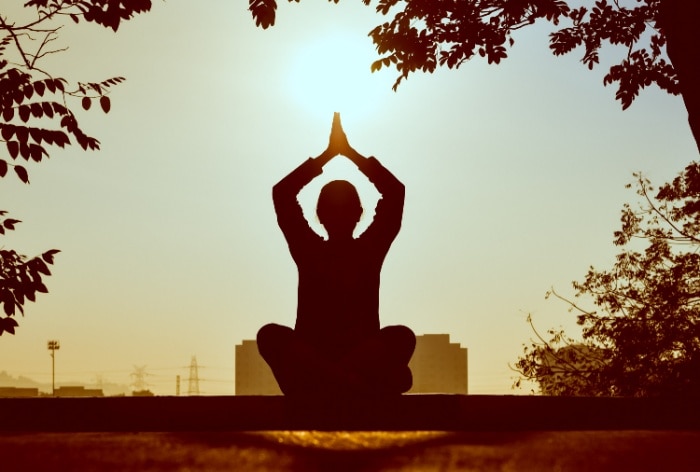Meditation has a long-term positive impact on mental and physical health. To incorporate this in your daily lifestyle, here are few tips and exercises that can truly work

In the modern-day corporate landscape, the blend of constant deadlines, career pursuits, and technology’s omnipresence, especially social media often snowballs into a source of stress and anxiety for many individuals. A startling 38% of the Indian workforce reported burnout, the highest among 15 surveyed nations, while 47% of professionals acknowledged workplace stress affecting their mental health.
Amid this scenario, meditation, a treasure from India’s ancient practices, emerges as a serene ally. Its simplicity and affordability make it an accessible remedy to combat work-induced stress, fostering a healthier, more productive professional realm. Thus, embracing meditation is not merely a step towards individual mental tranquillity but a stride towards cultivating a conducive work environment in India’s fast-paced corporate landscape.
Unveiling Meditation And Its benefits
Meditation soothes mind, reduces stress by promoting relaxation and helping individuals manage their reaction to stressors. It fosters emotional resilience, aiding in better control of emotions, and promoting a positive mood. Through improving concentration and attention, meditation can boost productivity by enabling clearer thinking and better decision-making. It can also boost physical health, calms mind, promotes a relaxed state and enhances sleep quality.
Here are three meditation exercises that can be easily integrated in your daily routine:
1. Mindful Breathing: Close your eyes or keep your gaze fixed at a point, and simply bring your attention to your breath. Notice the inhalation and exhalation, the rise and fall of your chest or belly. It’s simple, discreet, and can be done even while sitting at your desk.
2. Body Scan: Starting from the top of your head and moving down to your toes, mentally scan your body, noticing any tension or discomfort. This exercise promotes relaxation and can be done seated, making it suitable for the workplace.
3. Desktop Mindfulness:This involves bringing full attention to a task you are doing, be it typing, reading, or organizing your workspace. Practice doing it slowly with full awareness, tuning into the sensations involved in the task.
How to Build Meditation as a habit?
According to Poornima Singaravelu, Clinical Psychologist, HCL Healthcare “Building a meditation habit, especially in a bustling work environment, requires a blend of consistency, simplicity, and a dash of stealth.” Here’s how to go about it:
- Set a Routine: Dedicate a specific time each day for meditation, like during your lunch break or right before starting work. Consistency is key to forming a habit. Start with just 5 minutes a day and gradually increase the time as you become more comfortable with the practice.
- Keep it Simple: Choose simple meditation exercises that require less time and can be done without drawing too much attention.
- Use Technology: Employ apps or guided meditation resources to ease into the practice. They often come with timers and guided sessions which can be beneficial in establishing a habit.
Incorporating these exercises into your workday can assist in building meditation as a daily habit, promoting a more balanced and less stressful work environment.
